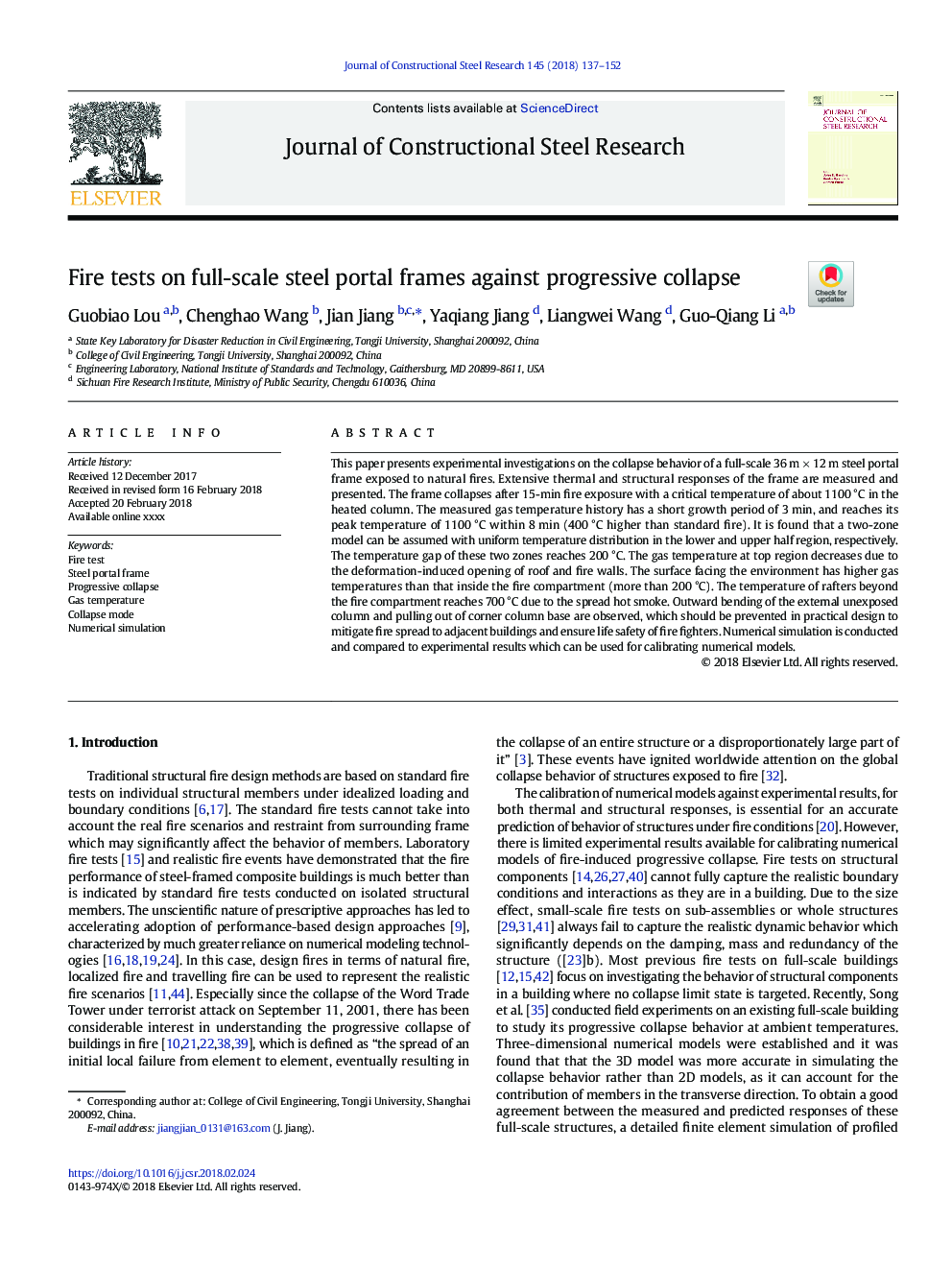| Article ID | Journal | Published Year | Pages | File Type |
|---|---|---|---|---|
| 6750698 | Journal of Constructional Steel Research | 2018 | 16 Pages |
Abstract
This paper presents experimental investigations on the collapse behavior of a full-scale 36â¯mâ¯Ãâ¯12â¯m steel portal frame exposed to natural fires. Extensive thermal and structural responses of the frame are measured and presented. The frame collapses after 15-min fire exposure with a critical temperature of about 1100â¯Â°C in the heated column. The measured gas temperature history has a short growth period of 3â¯min, and reaches its peak temperature of 1100â¯Â°C within 8â¯min (400â¯Â°C higher than standard fire). It is found that a two-zone model can be assumed with uniform temperature distribution in the lower and upper half region, respectively. The temperature gap of these two zones reaches 200â¯Â°C. The gas temperature at top region decreases due to the deformation-induced opening of roof and fire walls. The surface facing the environment has higher gas temperatures than that inside the fire compartment (more than 200â¯Â°C). The temperature of rafters beyond the fire compartment reaches 700â¯Â°C due to the spread hot smoke. Outward bending of the external unexposed column and pulling out of corner column base are observed, which should be prevented in practical design to mitigate fire spread to adjacent buildings and ensure life safety of fire fighters. Numerical simulation is conducted and compared to experimental results which can be used for calibrating numerical models.
Keywords
Related Topics
Physical Sciences and Engineering
Engineering
Civil and Structural Engineering
Authors
Guobiao Lou, Chenghao Wang, Jian Jiang, Yaqiang Jiang, Liangwei Wang, Guo-Qiang Li,
